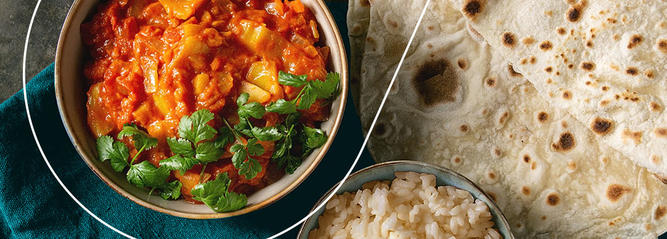Vegetable curry is a great meal option for people with diabetes
A meal that’s full of vegetables like pumpkin, cauliflower, chickpeas, and potatoes contains a good amount of fibre, so it can help you to stay full and feel satisfied for hours.1 This is especially important when it comes to meals for people with diabetes because consuming fibre can improve blood sugar management and contribute to other positive factors related to heart health, including cholesterol levels and body weight.2
Along with fiber and other nutrients, you’ll get tons of flavour from ingredients like onion, garlic and red pepper.
Vegetable Curry Recipe
While this vegetarian recipe is very filling when eaten on its own, vegetable curry is traditionally served with basmati rice. Instead of basmati rice, brown rice is a better option for people with diabetes because it has more fibre, while white rice has a higher glycaemic index and glycaemic load, which means it raises blood sugar levels after a meal.3,4 It’s a medium- to low-glycaemic food that releases energy slowly, so you don’t need to worry about a spike in your blood sugar levels.
For the best flavour, it’s helpful to use fresh spices in your vegetable curry. Before you start cooking, check to see how old your ground spices are, and if they happen to be more than a couple of years old, consider replacing them.

